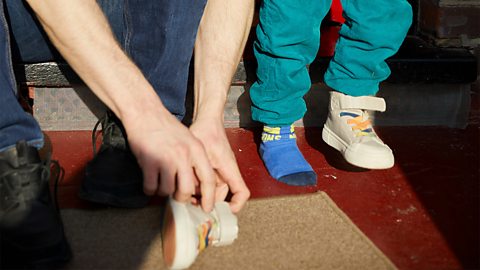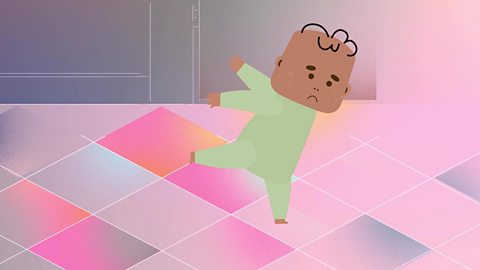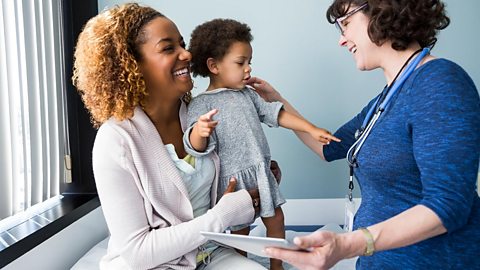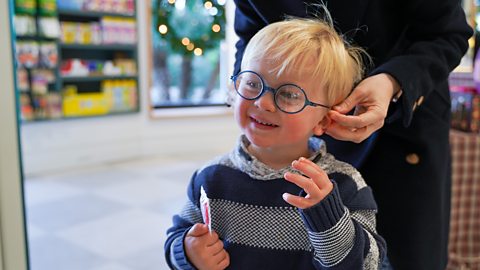Whether itÔÇÖs keeping their head upright as a baby, learning to sit up straight, taking their first steps or riding a bike, balance and coordination are key to so many milestones in your childÔÇÖs development.
But have you ever stopped to consider what is involved in them developing a sense of balance and improving their coordination?
We spoke to Dr Sunil Sharma, an Ear, Nose and Throat Specialist from Alder Hey ChildrenÔÇÖs Hospital to find out all about balance and how to spot if there is an issue with your childÔÇÖs coordination.
What affects balance and coordination?
It might seem strange talking to an ENT specialist about balance. However, Sunil explains that thereÔÇÖs a lot more to coordination than meets the eye. ÔÇ£Coordination involves using a mixture of different senses to work out your position in relation to the world around you. We use our eyes to visualise where we are - you're looking around and seeing different objects, which tells us where we are in relation to them. But it also involves your ears. There is a particular part of the inner ear which helps to coordinate balance.ÔÇØ
ThatÔÇÖs not all, says Sunil. ÔÇ£There's another thing called proprioception, which is a fancy word for sensing where parts of your body are positioned when using your muscles. For example, knowing where your arms are positioned when you raise your hand. All of these things integrate, and your brain interprets the information it receives and tells you the position youÔÇÖre in and whether youÔÇÖre balanced.ÔÇØ
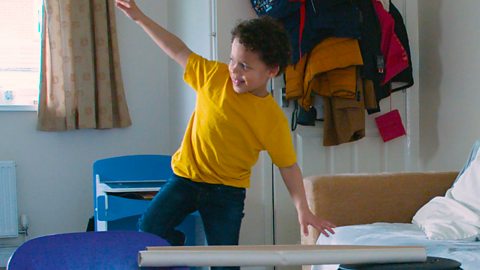
What is the vestibular system?
The part of your inner ear that helps to give your sense of balance is known as the vestibular system. It consists of three semicircular canals, each containing crystals. The position of these crystals helps your brain work out the position of your head. You can think of them as being like a system of spirit levels within the body.
ÔÇ£When fluid travels through those little canals it pushes the crystals in different directions, which gives you a sense of orientation. When youÔÇÖre turning your head, those crystals move in one direction or another,ÔÇØ explains Sunil. This system in your inner ear is attached to a nerve called the vestibular nerve, which supplies information about balance to your brain and you are then able to get your body under control.
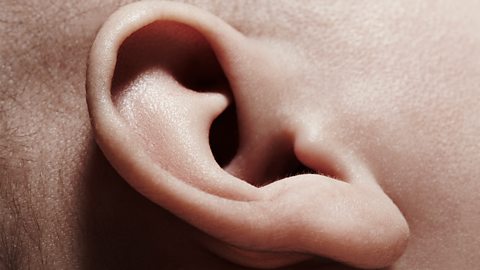
How does the balance system develop?
Sunil explains that you can see childrenÔÇÖs sense of balance developing in different milestones. ÔÇØAt about 6 months, most children are able to sit upright without support. At about 12 months they start to walk. Initially, they'll be cruising around, holding furniture before theyÔÇÖre able to walk by themselves.ÔÇØ However, he is keen to stress that all children develop at different rates. ÔÇ£ItÔÇÖs not the case that at 12 months, you should think ÔÇÿMy child is not walking. What's wrong with them?ÔÇÖ And even within families, one sibling will be different to another. But usually, by about 18 months, you get into that phase of children being able to walk around.ÔÇØ
What can you do to help your childÔÇÖs sense of balance to develop?
ÔÇ£ItÔÇÖs about supporting children to do activities that really make use of their coordination,ÔÇØ says Sunil. ÔÇ£Early on this could be any game involving spatial awareness, like putting toys into particular slots, encouraging children to sit up and move and eventually to walk. As they get older, itÔÇÖs helpful to teach them to ride a bike because it really helps them to understand balance.ÔÇØ
Here are some Tiny Happy People activities to boost your childÔÇÖs coordination at different ages:
Babies
Toddlers
Pre-schoolers

What can cause issues with childrenÔÇÖs balance?
As balance involves different senses and different parts of the vestibular system, there are a few areas where children may experience issues, Sunil explains.
Here are some problems that can affect childrenÔÇÖs balance:
- Glue ear ÔÇô Sunil says this is the most common condition that affects childrenÔÇÖs balance. ÔÇ£It can present itself as clumsiness and starting to lean over or fall over,ÔÇØ he says.
- Inflammation of the nerve - ÔÇ£Sometimes the vestibular nerve can get inflamed if you have an ear infection, which can travel further into your inner ear and cause balance problems because the nerve doesnÔÇÖt work as well.ÔÇØ
- Benign paroxysmal vertigo ÔÇô This is a common condition that causes dizziness in children. The precise cause of BPV is unknown, but most children grow out of it as the vestibular system develops, says Sunil.
- Vestibular ÔÇô some migraines can affect balance.
- ÔÇô ÔÇ£This is quite rare in children, but it can be associated with balance problems as well as other symptoms involving the ears, like ringing noises and hearing loss.ÔÇØ
- Problems with the brain ÔÇô Sunil doesnÔÇÖt want to worry parents but says ÔÇ£ItÔÇÖs really important with balance issues to see a doctor as soon as possible to make sure there isnÔÇÖt a problem with the nerves and the brain.ÔÇØ
How do balance issues feel and what can parents look out for?
ÔÇ£When something goes wrong with your balance, it can give you various feelings,ÔÇØ says Sunil. ÔÇ£It could be like when youÔÇÖre on a boat and you feel like youÔÇÖre going up and down or it could be a spinning sensation. It can be difficult to spot because toddlers won't be communicating things like ÔÇÿit feels like the world is spinning around meÔÇÖ, so keep an eye out for any behavioural clues. A key one is clumsiness and falling over an unusual amount. Of course, kids fall over all the time, but keep an eye out for if your child is falling over consistently.ÔÇØ
While Sunil doesnÔÇÖt want parents to be anxious about their childÔÇÖs development, ÔÇ£Be mindful if they're not meeting those developmental milestones,ÔÇØ he says. ÔÇ£If your baby is around 18 months to 2 years old and theyÔÇÖre not walking, it could be a sign thereÔÇÖs a balance problem.ÔÇØ
ÔÇ£Finally, as they get older and reach pre-school, keep an eye on them losing concentration and if they're quickly getting irritated. I know thatÔÇÖs very non-specific, but sometimes children may be getting frustrated because they can't really sit up straight but theyÔÇÖre not able to put it into words.ÔÇØ
If you have any concerns about your childÔÇÖs coordination, then itÔÇÖs important to speak to your health visitor or GP, whoÔÇÖll be able to offer advice.
